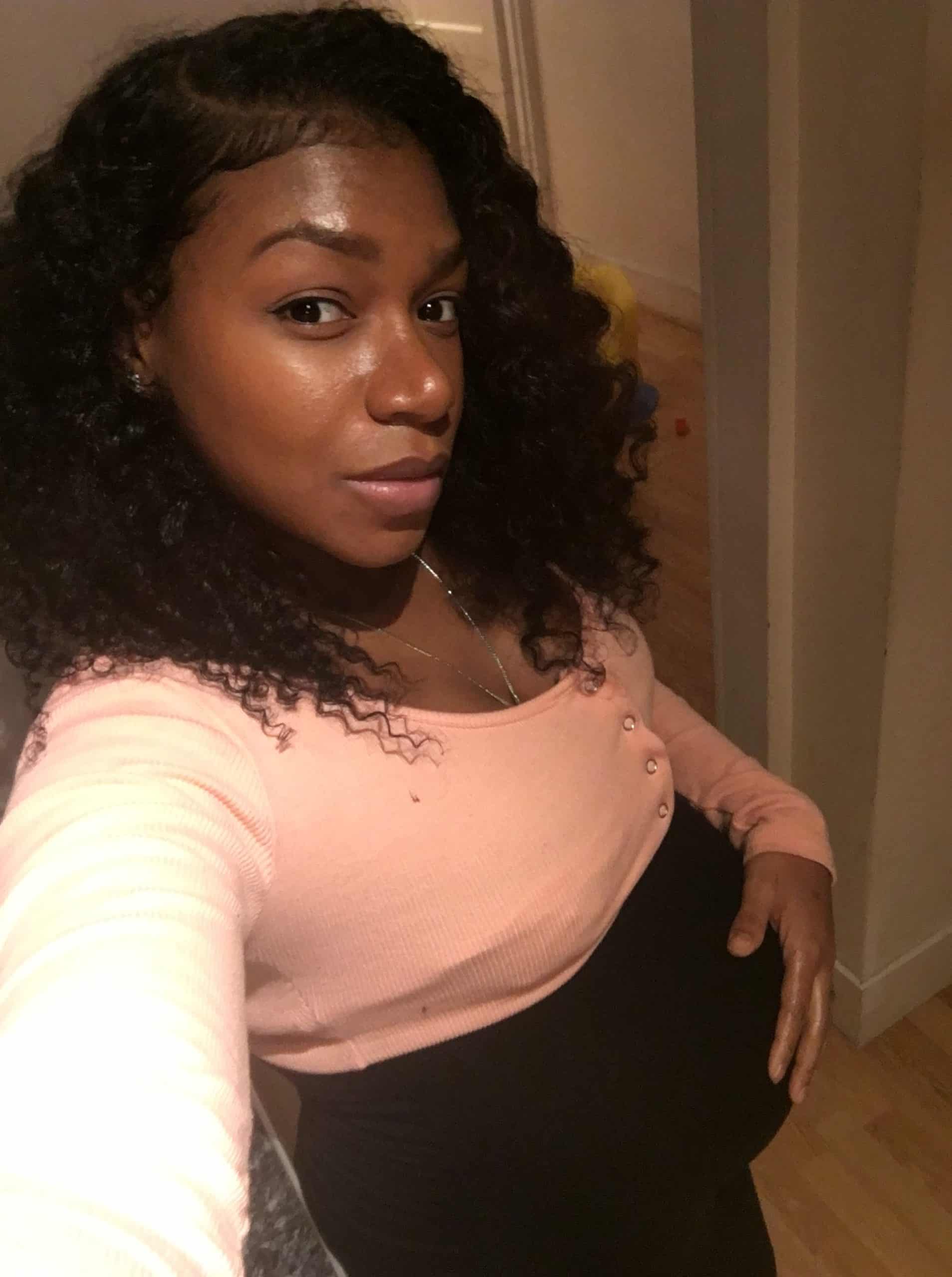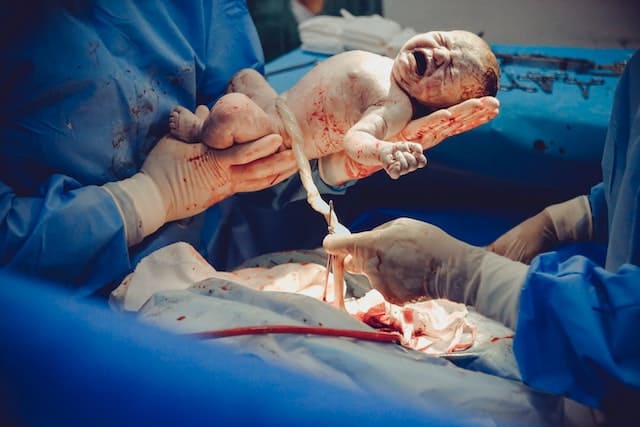After a cesarean section, new mothers may experience physical discomfort and pain, which could make it difficult to find comfortable clothing. The incision area may be sensitive and swollen, and the abdomen may be sore for several weeks.
It is important to choose clothing that is comfortable and does not put pressure on the incision site.
When selecting clothing after a cesarean section, new mothers should consider their comfort and the ease of breastfeeding. Clothing that is easy to put on and take off, such as loose-fitting tops and dresses, is recommended.
Additionally, clothing that allows for easy access to the breasts for breastfeeding is important.
Key Takeaways
- Comfortable clothing that does not put pressure on the incision site is important after a cesarean section.
- Clothing that is easy to put on and take off, as well as allows for easy access to the breasts for breastfeeding, is recommended.
- New mothers should prioritize their comfort and ease of breastfeeding when selecting clothing after a cesarean section.
Understanding Cesarean Section
A cesarean section, also known as a c-section, is a surgical procedure used to deliver a baby when vaginal delivery is not possible or safe for the mother or the baby. Cesarean delivery can be planned in advance or performed as an emergency procedure.
During a c-section, the doctor makes an incision in the mother’s abdomen and uterus to remove the baby. The incision can be made horizontally (across the lower abdomen) or vertically (from the navel to the pubic bone). The type of incision depends on the reason for the c-section and the doctor’s preference.
After the baby is delivered, the doctor closes the incision with stitches or staples. The type of closure depends on the incision type, the doctor’s preference, and the mother’s condition.
C-sections are typically performed under regional anesthesia, which means the mother is awake but numbed from the waist down. An epidural is the most common type of regional anesthesia used for c-sections.
Overall, cesarean delivery is a safe and common procedure. However, like any surgery, it carries risks such as infection, bleeding, and blood clots. The recovery period after a c-section can also be longer and more uncomfortable than after a vaginal delivery.
In conclusion, understanding the basics of cesarean section is important for any expectant mother. By knowing what to expect during and after the procedure, mothers can better prepare themselves for childbirth and make informed decisions about their healthcare.
Post-Cesarean Recovery Process
Recovering from a cesarean section (C-section) can be a challenging process, but it is essential to take care of yourself to ensure a smooth recovery. The recovery process after a C-section typically takes longer than a vaginal delivery, and it is crucial to follow the healthcare provider’s instructions and recommendations.
Rest is crucial during the recovery period after a C-section. It is essential to avoid any strenuous activities and to limit any movements that may cause pain or discomfort. Healthcare providers may recommend specific exercises to help with the recovery process, but it is crucial to follow their instructions carefully.
Pain management is an important aspect of the recovery process after a C-section. Healthcare providers may prescribe pain medication to manage the pain and discomfort during the recovery period.
It is crucial to take the medication as prescribed and to avoid over-the-counter pain medication without consulting with a healthcare provider.
After the C-section, patients will typically spend a few days in the hospital to ensure proper healing and to monitor for any signs of infection. It is crucial to follow the healthcare provider’s instructions during the hospital stay and to keep the wound clean and dry.
Once the healthcare provider deems the patient ready, they will be discharged from the hospital. It is essential to follow the instructions provided by the healthcare provider regarding wound care and any medications prescribed.
Signs of infection, such as fever, headache, and wound redness, should be monitored closely during the recovery process. It is crucial to contact the healthcare provider immediately if any signs of infection are present.
The recovery timeline after a C-section can vary, but patients can typically expect to resume normal activities within six to eight weeks after the procedure. It is crucial to attend the postpartum checkup with the healthcare provider to ensure proper healing and to address any concerns or questions.
In conclusion, the recovery process after a C-section requires patience and dedication to ensure proper healing. It is crucial to follow the healthcare provider’s instructions and recommendations and to monitor for any signs of infection during the recovery period.
Physical Changes and Challenges
After a cesarean section, a woman’s body undergoes several physical changes and challenges. These changes can be uncomfortable and challenging to manage. Here are some of the common physical changes and challenges that a woman may experience after a cesarean section:
Bleeding
Bleeding is a common occurrence after a cesarean section. It is similar to the bleeding that occurs after a vaginal birth. However, the bleeding may be heavier and last longer. It is important to use the appropriate sanitary pads to manage the bleeding and change them regularly.
Swelling
Swelling in the legs and feet is common after a cesarean section. It is caused by the accumulation of fluids in the body. To manage the swelling, a woman should rest and elevate her legs whenever possible.
Lochia
Lochia is the discharge of blood, mucus, and tissue from the uterus after giving birth. It is similar to a heavy period and can last for several weeks. It is important to use the appropriate sanitary pads to manage the discharge and change them regularly.
Abdominal Muscles
After a cesarean section, a woman’s abdominal muscles may be weak and sore. This can make it difficult to move around and perform daily activities. It is important to rest and avoid strenuous activities until the muscles have healed.
Scar
The scar from the cesarean section may be uncomfortable and itchy. It is important to keep the scar clean and dry to prevent infection. It is also important to avoid wearing tight clothing that may irritate the scar.
Incontinence
Incontinence is the loss of bladder control. It can be a common occurrence after a cesarean section. To manage incontinence, a woman should perform pelvic floor exercises regularly.
Engorgement
Engorgement is the swelling and tenderness of the breasts caused by an increase in milk production. It can be uncomfortable and painful. To manage engorgement, a woman should breastfeed or pump regularly.
Overall, it is important for women to take care of their bodies after a cesarean section. With proper care and attention, they can manage the physical changes and challenges and recover quickly.
Emotional Well-being After C-Section
Recovering from a cesarean section can be a challenging experience, both physically and emotionally. While the focus is often on the physical recovery, it is important not to overlook the emotional aspect of healing.
Many women experience a range of emotions after a c-section, including feelings of sadness, anxiety, and disappointment. This is completely normal and is often referred to as the “baby blues.” These feelings usually subside within a few weeks, but if they persist or become more severe, it may be a sign of postpartum depression.
It is important for women to take care of their emotional well-being after a c-section. This can include seeking support from family and friends, talking to a therapist or counselor, practicing self-care, and prioritizing wellness activities such as exercise and healthy eating.
One of the most important things women can do for their emotional well-being after a c-section is to be kind to themselves and allow time for healing. It is important to remember that recovery takes time and to not put too much pressure on themselves to “bounce back” quickly.
Overall, taking care of emotional well-being after a c-section is just as important as taking care of physical well-being. By prioritizing self-care and seeking support when needed, women can navigate the emotional challenges of c-section recovery and emerge stronger and more resilient.
Breastfeeding After Cesarean Section
Breastfeeding is an important aspect of postpartum recovery and bonding between mother and baby. After a cesarean section, it is still possible to breastfeed, though it may require some additional considerations.
One of the main challenges for breastfeeding after a cesarean section is finding a comfortable position to nurse the baby. The incision site may be sore and tender, making it difficult to find a comfortable position.
The mother may need to experiment with different positions, such as the football hold or side-lying position, to find what works best for her.
Another consideration for breastfeeding after a cesarean section is the need for easy access for nursing. The mother may want to wear loose-fitting clothing or nursing tops that allow for easy access to the breasts. A nursing pillow can also be helpful in providing support for the baby during feedings.
It is important for the mother to take care of herself and her incision site while breastfeeding. This may include taking pain medication as prescribed, getting enough rest, and avoiding activities that could strain the incision site. It is also important to maintain good hygiene and keep the incision site clean and dry to prevent infection.
If the mother is having difficulty breastfeeding or has concerns about her milk supply, she should consult with a lactation consultant or healthcare provider. They can provide guidance and support to help ensure a successful breastfeeding experience.
Overall, with proper care and consideration, it is possible to breastfeed after a cesarean section and enjoy the many benefits of this important bonding experience between mother and baby.
Post-Cesarean Hygiene and Care
After a cesarean section, it is important to take extra care of the incision site to ensure proper healing and prevent infection. Maintaining good hygiene is crucial during this time.
The incision site should be kept clean and dry. It is recommended to avoid taking a bath until the incision has fully healed, which can take up to 6 weeks. Instead, a shower can be taken, but it is important to avoid direct water pressure on the incision site. Patting the area dry with a clean towel is recommended.
Hot tubs and swimming pools should be avoided until the incision has fully healed to prevent infection. It is also important to avoid any activities that may cause excessive sweating or rubbing on the incision site.
Lochia, the vaginal discharge after childbirth, is normal and can last for up to 6 weeks. It is important to use sanitary pads and change them frequently to avoid infection. Tampons should not be used during this time.
Overall, maintaining good hygiene and avoiding activities that may irritate the incision site is crucial for proper healing after a cesarean section.
What to Wear After Cesarean Section
After a C-section, it’s important to wear comfortable clothing that won’t irritate your incision site. Here are some clothing options to consider:
Maternity Clothes
Maternity clothes can be a great option after a C-section because they are designed to be comfortable and provide extra room for your postpartum body.
Postpartum Underwear
Postpartum underwear is designed to provide full coverage and support for your incision site. Look for options that are made from soft, breathable materials.
Robe
A robe can be a comfortable and convenient option for postpartum recovery. Look for a robe that is loose-fitting and made from soft, breathable materials.
Dresses
Dresses can be a great option for postpartum recovery because they are comfortable and easy to wear. Look for options that are loose-fitting and made from soft, breathable materials.
Pajamas
Pajamas can be a comfortable option for postpartum recovery. Look for options that are loose-fitting and made from soft, breathable materials.
Postpartum Panties
Postpartum panties are designed to provide compression and support for your incision site. Look for options that are made from soft, breathable materials.
Compression and Support
Compression and support garments can be helpful for postpartum recovery. Look for options that are designed specifically for C-section recovery.
Nursing
If you plan to breastfeed, consider clothing options that are designed for nursing. Look for options that are easy to open and close for breastfeeding.
Abdominal Binder
An abdominal binder can be helpful for providing support and compression for your incision site. Look for options that are designed specifically for C-section recovery.
Granny Panties
Granny panties can be a comfortable option for postpartum recovery. Look for options that are loose-fitting and made from soft, breathable materials.
Disposable Underwear
Disposable underwear can be a convenient option for postpartum recovery. Look for options that are made from soft, breathable materials.
High-Waisted Underwear
High-waisted underwear can be a comfortable and supportive option for postpartum recovery. Look for options that are made from soft, breathable materials.
Sleepwear
Comfortable sleepwear is important for postpartum recovery. Look for options that are loose-fitting and made from soft, breathable materials.
Loose-Fitting Tops
Loose-fitting tops can be a comfortable option for postpartum recovery. Look for options that are made from soft, breathable materials.
Cardigans
Cardigans can be a convenient option for layering during postpartum recovery. Look for options that are loose-fitting and made from soft, breathable materials.
Sweatpants
Sweatpants can be a comfortable option for postpartum recovery. Look for options that are loose-fitting and made from soft, breathable materials.
Nightgowns
Nightgowns can be a comfortable option for postpartum recovery. Look for options that are loose-fitting and made from soft, breathable materials.
Postpartum Leggings
Postpartum leggings can be a comfortable and supportive option for postpartum recovery. Look for options that are designed specifically for C-section recovery.
Mesh Underwear
Mesh underwear can be a convenient option for postpartum recovery. Look for options that are made from soft, breathable materials.
Belly Binder
A belly binder can be helpful for providing support and compression for your incision site. Look for options that are designed specifically for C-section recovery.
Compression Leggings
Compression leggings can be a comfortable and supportive option for postpartum recovery. Look for options that are designed specifically for C-section recovery.
Belly Band
A belly band can be helpful for providing support and compression for your incision site. Look for options that are designed specifically for C-section recovery.
Physical Activity After Cesarean Section
Physical activity is an essential part of postoperative recovery after cesarean section. However, it is important to take it slow and gradually increase activity levels to avoid complications.
Lifting heavy objects should be avoided for at least six weeks after the surgery. This includes lifting infants, as they can weigh up to 10 pounds or more. It is recommended to ask for help when lifting objects or the baby until fully healed.
Exercise is an important part of recovery, but it should be done with caution. Women who have had a cesarean section should wait at least six weeks before starting any exercise routine.
It is recommended to start with low-impact exercises such as walking, swimming, or yoga. High-impact exercises such as running or jumping should be avoided until fully healed.
Walking is an excellent form of exercise and can be started as soon as possible after surgery. It can help prevent blood clots and improve circulation. However, it is important to start slowly and gradually increase the distance and pace.
Activity level should be increased gradually. Women who have had a cesarean section should avoid strenuous activity for at least six weeks after surgery. It is important to listen to the body and stop any activity that causes pain or discomfort.
Housework should be avoided for at least two weeks after surgery. It is important to avoid any activity that involves bending, lifting, or twisting. Women who have had a cesarean section should ask for help with household chores until fully healed.
Driving should be avoided for at least two weeks after surgery. Women who have had a cesarean section should not drive until they can comfortably wear a seatbelt and can easily turn the steering wheel without pain or discomfort.
In summary, physical activity is important for postoperative recovery after cesarean section. However, it should be done with caution and gradually increased over time.
Women who have had a cesarean section should avoid lifting heavy objects, strenuous exercise, and household chores for at least six weeks after surgery. It is important to listen to the body and stop any activity that causes pain or discomfort.
Diet and Nutrition Post-Cesarean
After a cesarean section, it is important for new mothers to focus on a healthy diet and nutrition. This can help to speed up the healing process and provide the necessary nutrients for both the mother and baby.
A well-balanced diet should include plenty of fruits, vegetables, whole grains, lean protein, and healthy fats. It is also important to stay hydrated by drinking plenty of water and other fluids.
Iron-rich foods are especially important for new mothers to help replenish the body’s iron stores that may have been lost during childbirth. Good sources of iron include lean red meat, poultry, fish, beans, lentils, tofu, and fortified cereals.
Breastfeeding mothers should also be mindful of their caffeine and alcohol intake, as these substances can be passed on to the baby through breast milk. It is recommended to limit caffeine to no more than 300 milligrams per day and to avoid alcohol altogether while breastfeeding.
In addition to a healthy diet, new mothers may also benefit from taking a daily multivitamin that contains folic acid, iron, and other essential nutrients. However, it is important to consult with a healthcare provider before taking any supplements.
Overall, a healthy diet and proper nutrition can help new mothers recover from a cesarean section and provide the necessary nutrients for both the mother and baby.
Sexual Activity and Contraception Post-Cesarean
After a cesarean section, women may have questions about when they can resume sexual activity and what contraception options are available to them. It’s important to note that each woman’s recovery is unique, and it’s essential to discuss these topics with a healthcare provider.
Generally, women can resume sexual activity once they feel comfortable and have received clearance from their doctor. It’s important to wait until any incisions have healed, and there is no pain or discomfort during intercourse.
Regarding contraception, women should consider their options carefully. It’s essential to use some form of contraception to prevent unintended pregnancy, as getting pregnant too soon after a cesarean section can increase the risk of complications.
Some contraception options that are safe to use after a cesarean section include:
- Barrier methods, such as condoms or diaphragms
- Hormonal methods, such as birth control pills, patches, or injections
- Intrauterine devices (IUDs)
It’s important to discuss the risks and benefits of each option with a healthcare provider to determine which method is best for each woman’s unique situation.
It’s also important to note that some women may experience changes in their vaginal health after a cesarean section. These changes may include vaginal dryness or discomfort during intercourse.
Women can discuss these concerns with their healthcare provider, who may recommend lubricants or other treatments to alleviate symptoms.
In summary, women can resume sexual activity once they feel comfortable and have received clearance from their doctor. It’s essential to use some form of contraception to prevent unintended pregnancy, and women should discuss their options with a healthcare provider.
Additionally, women may experience changes in their vaginal health after a cesarean section, and it’s important to discuss any concerns with a healthcare provider.
Related posts:
Frequently Asked Questions
When can you start wearing normal clothes after C-section?
After a C-section, it is recommended to wear loose and comfortable clothes for the first few weeks. You can start wearing normal clothes once your incision has healed and you are comfortable.
This usually takes around 6 weeks. However, it is important to consult with your doctor before returning to normal clothing.
What should you wear after a C-section?
After a C-section, it is recommended to wear loose and comfortable clothing that does not put pressure on the incision area. Loose-fitting dresses, skirts, and pants with an elastic waistband are good options. Avoid tight clothing and fabrics that irritate the skin.
How do you dress for a C-section incision?
When dressing for a C-section incision, it is important to choose clothing that does not rub against the incision area. Avoid clothing with a tight waistband or anything that puts pressure on the incision. It is also recommended to wear underwear that sits above the incision area to avoid irritation.
What are the best trousers to wear after C-section?
The best trousers to wear after a C-section are loose-fitting pants with an elastic waistband. High-waisted pants can be uncomfortable as they may put pressure on the incision area. It is also important to avoid pants with zippers or buttons that may irritate the incision.
Can I wear high waisted jeans after C-section?
It is recommended to avoid high-waisted jeans after a C-section as they may put pressure on the incision area and cause discomfort. It is better to opt for loose-fitting pants with an elastic waistband.
What are the best pajamas for hospital after C-section?
The best pajamas for the hospital after a C-section are loose-fitting and comfortable. A nightgown or a loose-fitting pajama set is a good option. It is important to choose pajamas that do not rub against the incision area and are easy to take on and off for medical examinations.
Related Post: Lifting Toddler After C Section

Iesha is a loving mother of 2 beautiful children. She’s an active parent who enjoys indoor and outdoor adventures with her family. Her mission is to share practical and realistic parenting advice to help the parenting community becoming stronger.



